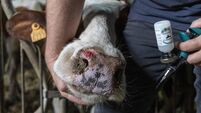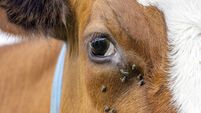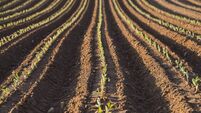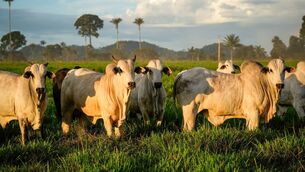Big changes in store for farmers as EU and state money dries up for TB eradication
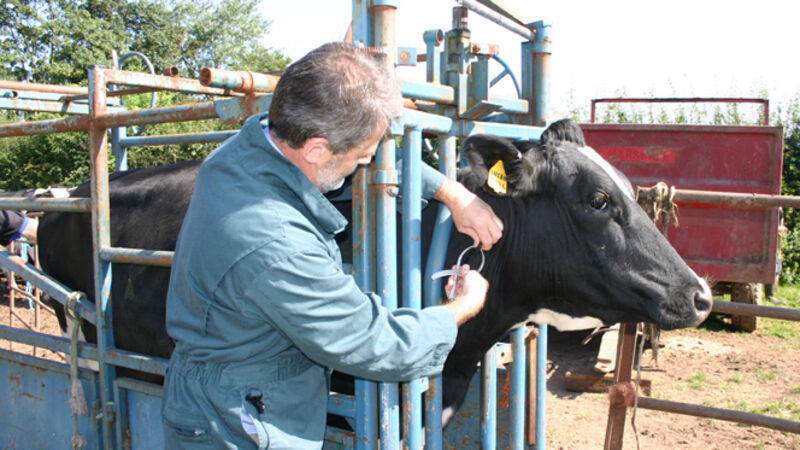
Under the new regulations, when TB is found in a herd, the Department of Agriculture, Food and the Marine (DAFM) says cattle which previously tested inconclusive in the herd should be removed as in-contacts, with compensation payable.
Fears that the EU could pull its funding completely in 2021 for bovine TB eradication which costs €92 million per year in Ireland mean that the scheme is going to get tougher for farmers.
This will come as no surprise to the farmers who sit in the TB Stakeholder Forum, which has submitted recommendations on additional policies to reduce bovine TB levels.
They have already seen new rules introduced for cattle which test inconclusive.
Under the new regulations, when TB is found in a herd, the Department of Agriculture, Food and the Marine (DAFM) says cattle which previously tested inconclusive in the herd should be removed as in-contacts, with compensation payable.
And if four or more inconclusives are found in a herd test, they should be deemed reactors, with compensation payable.
Similar clampdowns are on the way for chronically infected herds, herds with recurring bTB breakdowns, and high incidence areas.
Formerly known as “blackspots”, these high incidence areas are more likely to be found in Monaghan, Cavan, Louth North Meath, and parts of Clare, Cork, Tipperary, Wicklow, Offaly, and Westmeath.
A targeted, high-impact bTB control plan is already in place in Monaghan and parts of Cavan and Clare.
The new bTB eradication measures are a prerequisite for qualifying for €5.4m of EU funding in 2020 for TB eradication — but it could be the last year the EU contributes to eradication costs.
The EU will not plough millions forever into an eradication scheme in place since the 1950s, but which is now failing, with the incidence of the disease in herds rising since 2016 (and this deteriorating trend has continued into the first half of 2020), despite expenditure on bovine TB eradication of over €90m per year.
The EU’s funding contribution has fallen from €12.7m in 2014.
It contributed €7m of the €92m cost in 2019, with farmers paying €35m and the state €50m. As for the state’s €50m per year expenditure on bovine TB eradication, with the economy in severe recession, and the public debt level one of the highest in the world, a 70-year old bovine disease eradication scheme is now far down the list of national priorities, particularly when levels of bovine TB have been rising for four years.
The cost of the eradication programme has now become the biggest problem.
The 2020 cost is likely to rise, in line with the rising incidence of the disease in herds, but the maximum contribution expected from the EU for 2020 is €5.4m.
How much the EU will contribute in 2020 is subject to the Department of Agriculture, Food and the Marine (DAFM) coming up with a plan for additional, successful eradication measures.
Those measures are due to be announced any day now, in the launch of the renewed TB eradication programme promised in the Programme for Government.
Farmer organisations saying such measures can only be introduced if accompanied by increases in TB compensation rates are likely to be disappointed, with the DAFM insisting any available resources be targeted instead at disease-reducing measures, which the DAFM says will ultimately bring the most benefits to farmers — and hopefully reduce the spiralling national cost of the TB scheme.
But some extra money will have to be found somewhere for compensation, because it is on course to cost €2.5m extra this year, due to reactor numbers rising.
By the end of June, there were 19,285 TB reactors in herds, the highest number since 2010.
In the previous 12 months, 4,225 herds out of 105,561 tested had at least one bTB positive animal.
Compensation to farmers for disposal of these reactors is likely to cost €16.5m this year (the highest expenditure on reactors in a decade), up from €14m in 2019.
Increasingly, compensation will be payable only to farmers taking all possible measures to keep bTB out of their herds, as recommended in the biosecurity advice to farmers which the DAFM intensified in the past year.
Historically, TB in badgers made it harder to reduce bTB levels.
This was partially addressed through badger culling, and expansion of badger vaccination since 2019 will reduce the wildlife risk in a more sustainable, long-term manner.
Expansion of the dairy herd since 2015 has played a role in the bTB increase, linked to herd expansion and farm fragmentation, with the result that 52% of 2019 reactors were found in dairy herds, compared to 46% in 2015.
Ireland’s high number of cattle movements (2.8 million per year) also contributes to bTB risk.
Dairy expansion may be linked to a marked increase in herds with reactors so far this year in Meath, Westmeath, Cork North, and Tipperary North.
At the other end of the scale, Mayo and Donegal had the lowest 12-month rolling herd incidences, at 1.96% and 1.98% respectively, at the end of June.
In the Bovine TB (bTB ) Eradication Programme, every herd in the country must undergo at least one herd test annually.
With outbreaks of TB in herds greatly restricting trading of animals, and potentially causing financial difficulties for farmers, the annual TB test poses a big worry, and farmers are particularly worried about compensation for animals which have to be disposed of because they have TB, and about the role of wildlife in causing herd disease outbreaks.
